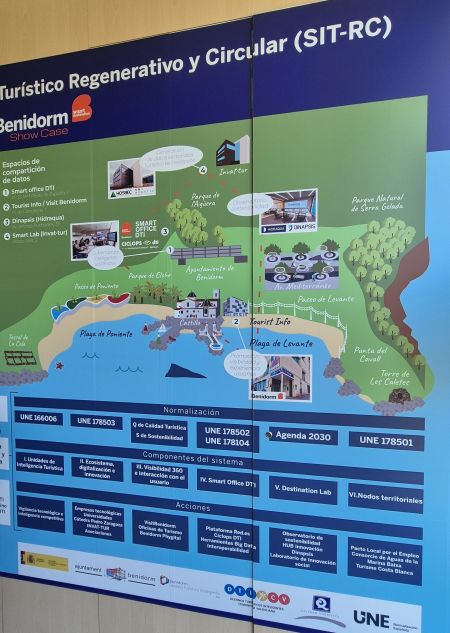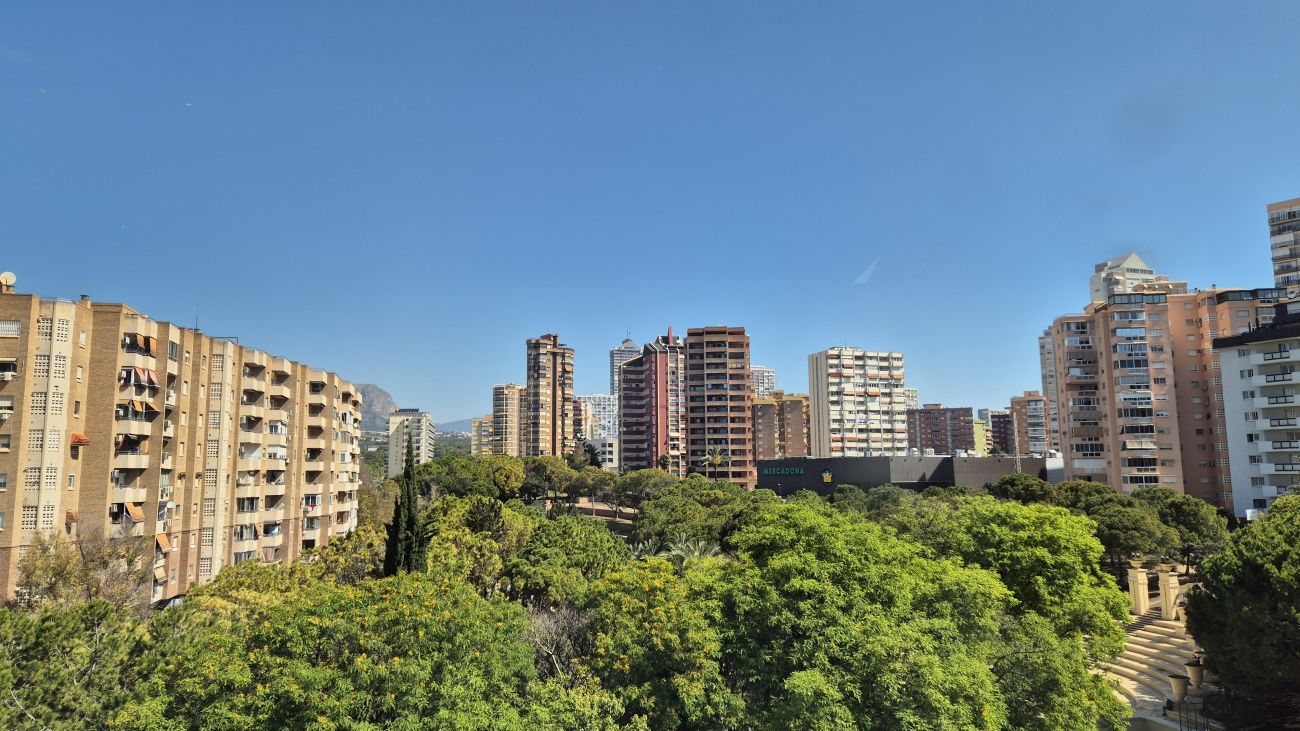 |
BENIDORM: REINVENTING A TOURISM CAPITAL THROUGH DATA AND SUSTAINABILITY (Spain)
Benidorm today stands as a pioneering example of how a global tourist hub can also lead in sustainability. |
Category: Europe - Spain - Industry economy
- Sustainability - Tourism
Article written by Asia Abadie on Thursday 18 September 2025
 Photo credit © Asia Abadie / Journal des Palaces
With advanced water efficiency, a compact vertical urban model, and a commitment to protecting more than half of its territory, Benidorm demonstrates that large-scale tourism and long-term sustainability are not only compatible, but mutually reinforcing.
At the heart of this transformation is the Benidorm Smart Office, which has spearheaded the city’s role as the first Smart Tourist Destination certified by Spain’s UNE 178501 standard. This recognition is more than a badge. It reflects a governance model rooted in sustainability, innovation, and universal accessibility - principles that guide every decision from water management to urban mobility.
A compact city with an impact
Benidorm only covers 38 km², of which 61% is protected land, yet its impact is on a far larger scale. With a permanent resident population of 74,588, the city hosts several times that number of tourists daily. Accommodation capacity alone illustrates it: 42,900 hotel beds, 16,100 apartment beds, 4,100 campsite plots, and 21,400 short-term rental beds.
Tourism here is not merely seasonal entertainment. It generates 1.1% of the GDP of the entire Valencian Community. Locally, its benefits are tangible: Benidorm has the lowest unemployment rate in the region - 10.75% - a figure that underscores how tourism directly supports livelihoods.
Perhaps the city’s most striking achievement lies in water management. Over the last 25 years, despite 40% population growth and a 26% increase in overnight stays, the city has reduced overall water consumption by 18%.
The integral water cycle system operates at over 95% efficiency, with minimal losses. Recycled water irrigates gardens, cleans streets, and even supports agriculture. In 2025, Benidorm recorded 162,134.31 units of water bodies, a metric that reflects both monitoring capacity and ecological stewardship.
The green infrastructure complements this efficiency. The municipality maintains 58.02% vegetal coverage, a remarkable figure for such a dense tourism hub.
A walkable, vertical model
Benidorm’s distinctive skyline is not only aesthetic. Its vertical urban model allows the city to accommodate massive visitor flows while preserving open space. Concentrating density upwards means the footprint of development is smaller, leaving room for nature and reducing pressure on land.
Mobility statistics highlight the success of this approach. More than 70% of all movement in Benidorm takes place on foot, the municipality has also invested in 134 km of bike lanes and cycle paths, promoting cycling as both leisure and transport.
For visitors, this means that beaches, hotels, and restaurants are rarely more than a short walk away — a design that reduces emissions while enhancing convenience.
Inclusivity, not exclusivity
Over the last two decades, the city has evolved from a three-star market to a destination with growing numbers of four- and five-star hotels. Yet value for money remains its hallmark.
“We are not a luxury destination, and we don’t pretend to be,” the Smart Office clarified. “But we are targeting the premium segment — showing that you can have high-quality experiences at a fair price.”
This philosophy extends to taxation. Unlike cities that impose tourist taxes, Benidorm resists such measures. The reasoning is simple: visitors already pay VAT on hotels, restaurants, and services. “For us, tourists are a gift,” said one spokesperson.
Social sustainability and local roots
Part of Benidorm’s resilience lies in its ownership model. Most hotels are still family-owned, passed down through generations of local entrepreneurs. This contrasts with other European resorts dominated by multinational chains, where profits often flow abroad.
Here, tourism revenues circulate locally, sustaining restaurants, shops, and services. Social sustainability - the sense that tourism benefits the community rather than alienates it - is a defining feature of Benidorm’s model.
Few cities face the same challenge: just 75,000 tax-paying residents, yet up to 250,000 people in the city on a normal day. The ability to manage this “floating population” is precisely what sets a Smart Destination apart from a smart city.
Benidorm’s greatest strength lies not only in its ability to host millions of visitors each year, but in how it does so responsibly. Few destinations can claim such a quantifiable record of environmental management: an 18% reduction in water consumption over 25 years despite population and tourism growth, 95% efficiency in its integral water cycle, 58% vegetal coverage, and a vertical urban model that preserves 61% of municipal land as protected space.
The Smart Office ensures these achievements are not isolated successes but part of a structured roadmap, where certifications, real-time data, and regional collaboration align with the 2030 Agenda for Sustainable Development. Benidorm’s compact design, emphasis on walking and cycling, and commitment to innovation position it as a benchmark for smart destinations worldwide.
Ultimately, Benidorm demonstrates that sustainability in tourism is not an aspiration but a tangible, ongoing practice — one that balances growth with preservation, local benefit with global responsibility. Its goal is clear: to remain a city where residents and visitors alike can thrive, while ensuring that the Mediterranean environment sustaining them both endures for generations to come.
 Photo credit © Asia Abadie / Journal des Palaces
 Photo credit © Asia Abadie / Journal des Palaces
|
|







